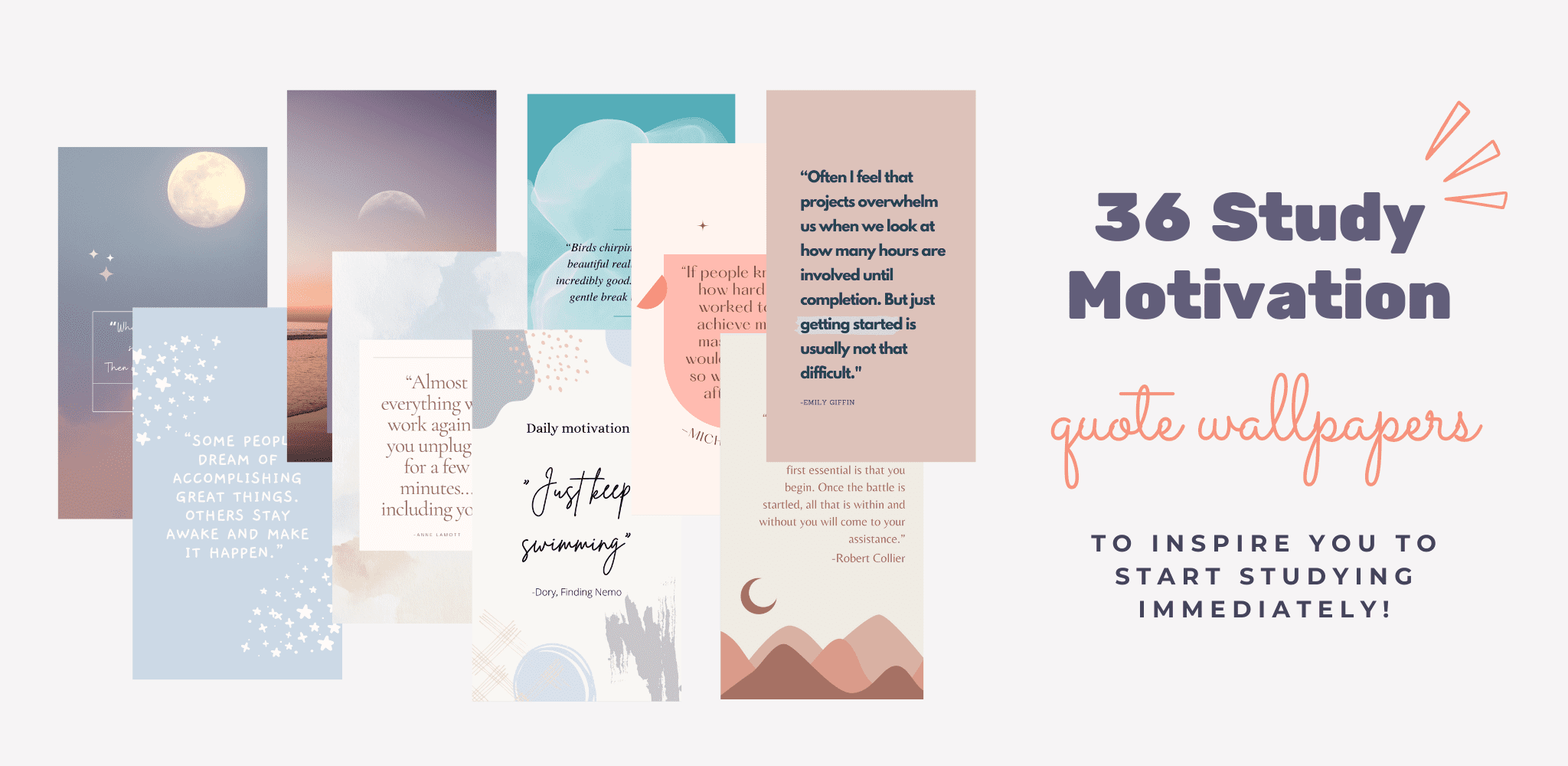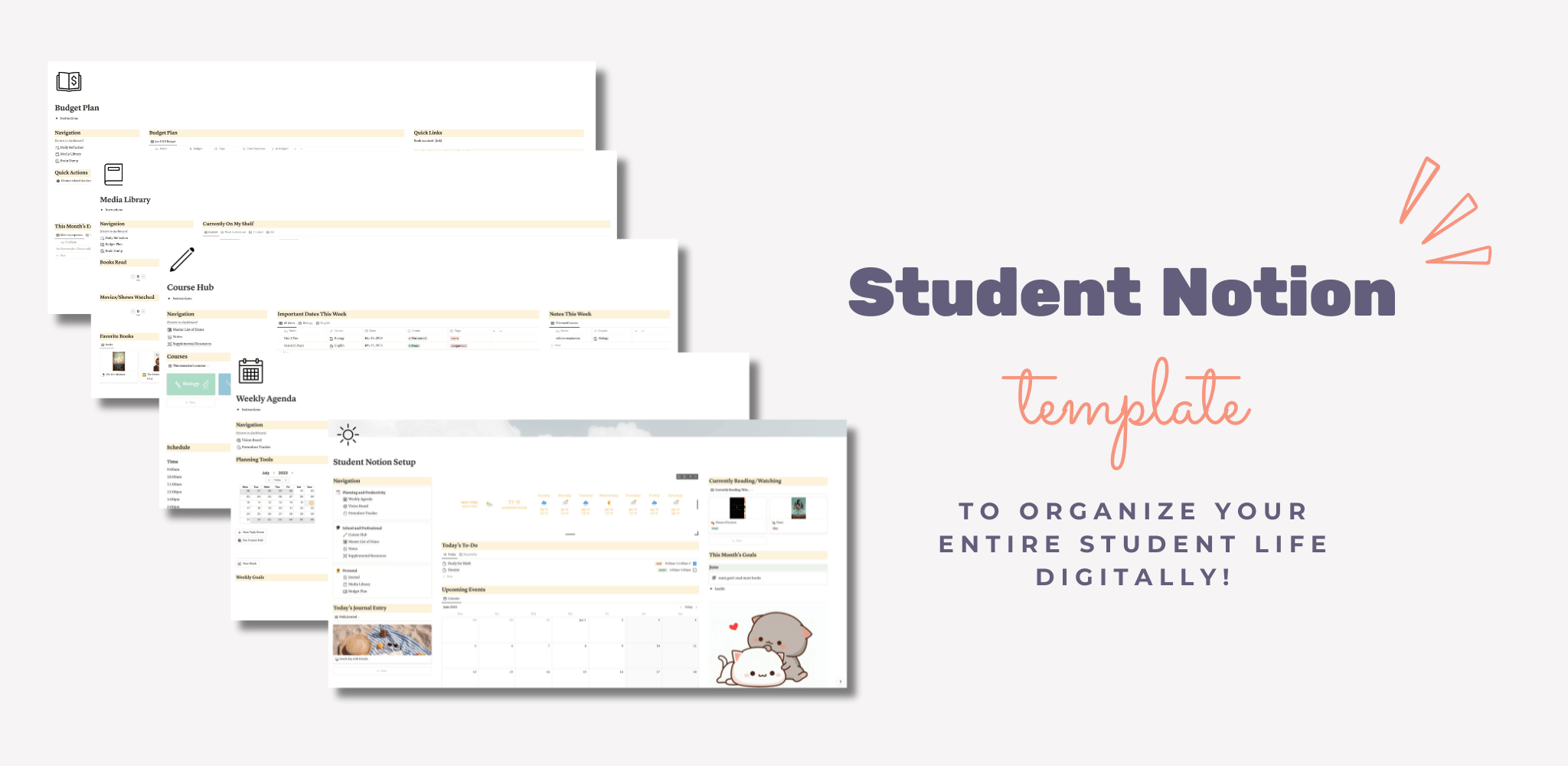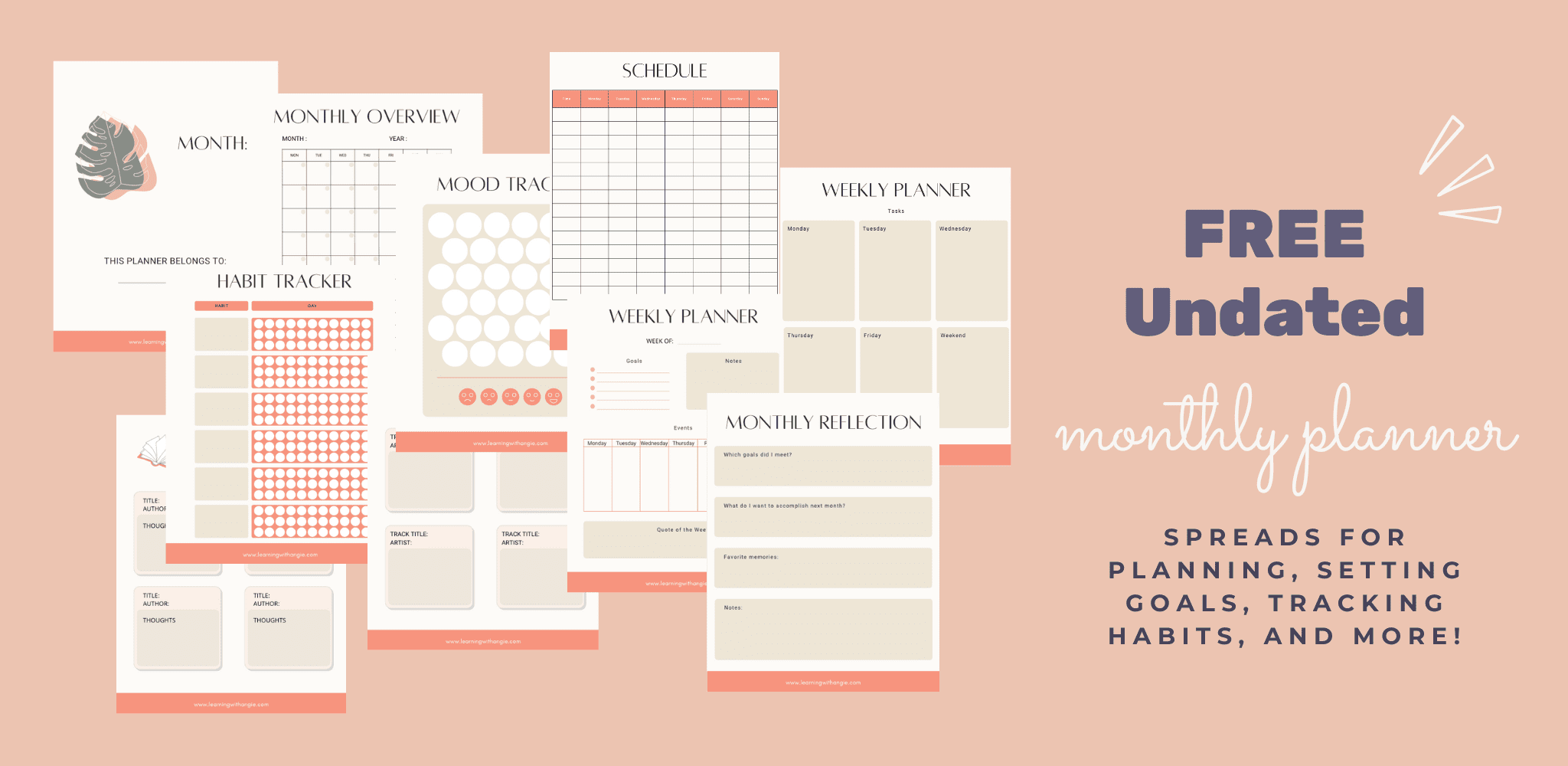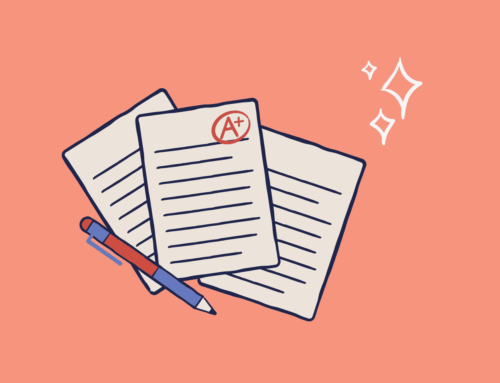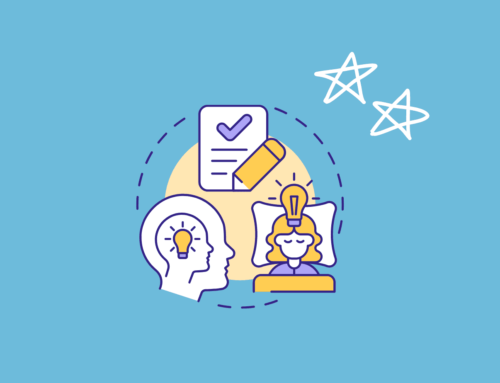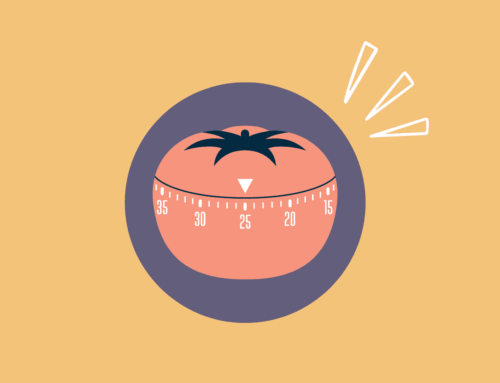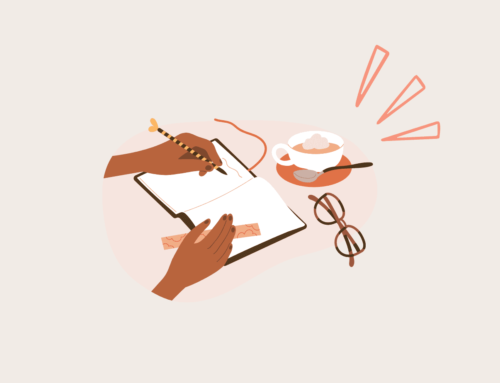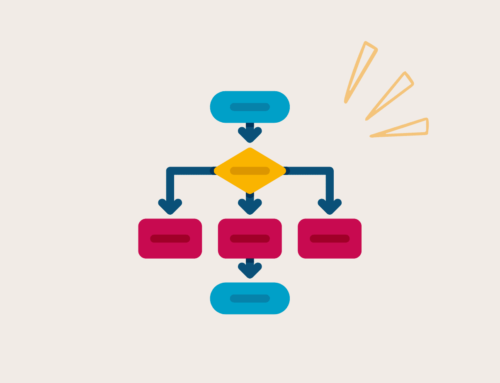
Taking notes as a student is essential. However, you may find that you struggle with:
- Not taking notes during lectures and forgetting most things after
- Not being able to understand your notes when you review
- Not making your notes detailed enough
- Including too many details in your notes
If you can relate to any of these, the good news is that you can solve the problem by adopting more effective note-taking strategies.
In this post, I’ll be sharing 14 different methods of note-taking to take notes more efficiently AND to improve retention and understanding. For each method, I’ll be providing:
- A description of how to do the method
- When to use the method
- An example of the method
- Pros and cons of the method
At the end, I’ll also be providing additional tips for effective note-taking, so make sure to stick around!
Importance of Note-Taking Skills for Students
Before we jump in, you may be wondering, “How important is note-taking?” According to many research studies, taking notes improves learning and retention. Whether you’re taking notes during a lecture or from a textbook, you’re more focused and engaging with the content.
Is It Better to Write or Type Notes?
There tends to be a lot of stigma around typing notes. Some studies, such as this one, have found that typing notes hurt learning and retention, while others (like this one) have concluded that typing notes does not meaningfully impact academic performance.
In my opinion, the effectiveness of notes depends on how you format and study them, rather than whether you write or type them.
For much of my life, I’ve handwritten notes. However, they were time-consuming and often tedious to study. In the past year, I’ve switched to a mix of digital and handwritten note-taking.

I currently use the app Notion to do note-taking. It has helped me take notes faster, as well as organize and study them more efficiently. However, when I’m listening to a live lecture, I prefer to take handwritten notes, particularly in technical classes when typing formulas is too time-consuming.
If necessary, I sometimes type up my handwritten notes to organize them more cleanly (also, rewriting my notes helps me remember the information better).
How to Prepare for Good Note-Taking
One last thing before we jump into the 14 note-taking methods: how to prepare for good note-taking. Before a lecture, you should always watch out for the following things:
Check the Syllabus
Know what topics will be covered. Skim through these topics in your textbook or watch a quick video if you’re not familiar with them.
Did you know that not understanding concepts is often the result of a gap between expectation and what actually happens? Here’s what I mean by this:
Say you’re taking a trip to Atlanta, Georgia and you’re reading an article titled “How to Dress for a Trip to Georgia”. However, as you’re reading, you see words like “marshrutka van” and “sulfur baths”. You start getting confused, until finally, you realize that you clicked on an article about the country Georgia, not the state.

The key point here is that we get confused if what we see isn’t what we expected. To prepare yourself for more effective note-taking, you must therefore prime yourself to expect what will be covered.
Don’t Drink Too Much Caffeine
For the most part, studies on the effect of caffeine on cognitive performance have presented mixed results. However, too much caffeine can cause “anxiety, nervousness, and jitteriness” so it’s important not to consume too much before a lecture.
Get Enough Rest
According to this article from the National Institutes of Health, not getting enough sleep can cause your ability to learn to drop by 40%. Therefore, it’s essential to get enough sleep.
You may also like “9 Best Night Routines for Students to Skyrocket Productivity”
Ok, now let’s jump into the 14 different methods of note-taking!
Outline Method of Note-Taking
How to:
Remember how I mentioned that you should check the syllabus before a lecture? This is a particularly good idea if you intend to use the outline of method of note-taking.
This involves making an outline with headings and subheadings before a lecture (or before you read a chapter of a textbook). Then, you add details under each heading.
When to use:
This is a good method to use if you know what topics will be covered beforehand.
I personally recommend this method for humanities classes. I’ve used it for classes like psychology and history when I had to take lots of notes from a textbook. Creating an outline of the headings and subheadings in each chapter beforehand made my notes more organized.
However, it can also work for technical classes, as you can see in the example below.
Example:

Pros:
- Provides a clear hierarchy of topics
- Easy to review
- Works well for digital notes
Cons:
- You don’t always know what will be covered in a lecture
- Little critical thinking involved
Learn more about the outline method of note taking here.
Mapping Method of Note-Taking
How to:
In the mapping method of note-taking, you put a central topic at the center of your page. Then, you draw lines branching out from this central topic to connect it to related topics.
Continue branching out until you have a map of related concepts, whose relationships are denoted by lines connecting them together.
When to use:
This is a good method to use when you’re reviewing because it requires prior knowledge of how concepts relate to one another. It requires some critical thinking and helps you see the connections between topics in a visual way.
Example:
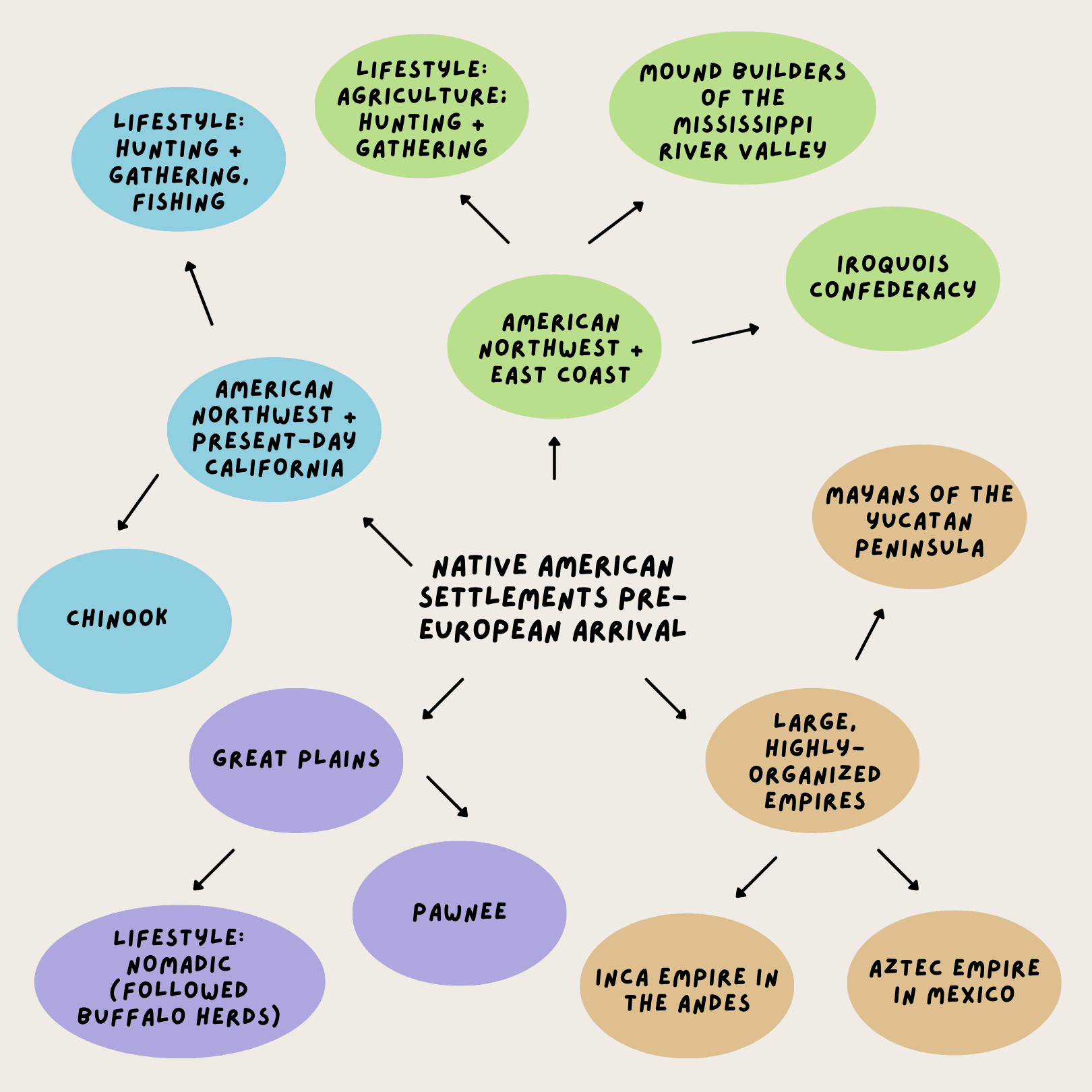
Pros:
- Good for visual learners
- Easy to see how concepts relate to one another
- Requires some critical thinking
- Digital mind map creators are available
Cons:
- Usually not a good idea for live lectures
- Can take up a lot of space
Learn more about the mapping method of note taking here.
Charting Method of Note-Taking
How to:
In the charting method of note-taking, you organize your notes into a table.
When to use:
If there are multiple instances you want to compare and contrast, the charting method makes it super easy.
For example, I used this method for psychology, since I frequently had to learn about things with multiple instances (e.g., different personality disorders, the branches of psychology).
I’ve also used this for history, since it helped me compare and contrast different events.
Example:

Pros:
- Allows you to compare and contrast
- Easy to review
- Works well for digital notes
Cons:
- Not good for live lectures
- Can be time-consuming
Learn more about the charting method of note taking here.
T-Chart Method of Note-Taking
How to:
The T-chart method of note-taking works exactly as it sounds. You draw a T-chart on your page. Then, you put labels (i.e., key terms or concepts) in the left column and descriptions in the right.
The T-chart method is basically the Cornell method (which I’ll cover next) without the summary section.
When to use:
This method is particularly useful in technical classes, where the summary section present in the Cornell note-taking method is unnecessary.
However, this method can also be used for humanities classes, when you feel like including a summary section is overkill.
You put important terms or concepts in the left column. On the right, you can then put formulas and relevant examples.
Example:

Pros:
- Easy to review
- Good for live lectures (particularly in technical classes, where Cornell note-taking can be overkill)
Cons:
- Doesn’t show relationships between different concepts
Cornell Method of Note-Taking
How to:
In the Cornell method of note-taking, you again split your page into two columns, with the right column being wider than the left one. However, this time, you need to leave a few lines at the bottom of your page.
During the lecture, fill in the right column. After the lecture, add keywords to the left column based on what you wrote on the right. At the bottom of each page, write 2-4 sentences summarizing the notes on the page in your own words.
When to use:
This method works well during live lectures.
I’ve found it particularly useful for humanities classes. In history, the summary part helped me notice overarching patterns, instead of getting lost in the nitty-gritty details.
Example:

Pros:
- Requires critical thinking
- If you challenge yourself not to look at your notes when writing the summary, it improves your retention
- Easy to see main concepts
Cons:
- Need to set up Cornell note-taking pages
- Need to fill in the left column and summary section after class (although this is a good review)
Sentence Method of Note-Taking
How to:
In the sentence method of note-taking, you simply write sentences separated by lines.
When to use:
If the lecture is relatively unstructured, this is a good method to use.
Example:

Pros:
- Easy to do
- Applicable to almost any kind of lecture
Cons:
- No hierarchy of topics (you can’t see what the main concepts are or how information is organized into topics and subtopics)
- Doesn’t identify relationships between concepts
- No critical thinking involved
Learn more about the sentence method of note taking here.
Boxing Method of Note-Taking
How to:
As the name suggests, the boxing method of note-taking involves putting your notes into boxes. You put small boxes with details on subtopics within bigger boxes.
When to use:
This method was originally designed for digital note-taking. However, it also works well for handwritten notes.
Example:

Pros:
- Good for visual learners
- Provides a clear hierarchy of topics
- Aesthetically pleasing
Cons:
- Can be time-consuming
- Can take up a lot of space
Learn more about the boxing method of note taking here.
Flow Method of Note-Taking
How to:
In the flow method of note-taking, you write down information as you hear it. However, instead of using bullets or sentences, you draw arrows to connect concepts.
This provides a visual way to recognize the logical flow of ideas.
When to use:
This is a good method to use during live lectures. It’s also applicable to most classes.
Personally, I use this method for math lectures because math is all about logical, step-by-step processes, and the flow method helps me see the chain of logic.
Example:

Pros:
- Easy to do during live lectures
- Helps you see logical connections between concepts
Cons:
- Can end up a bit messy—you may need to clean your notes up after the lecture
Learn more about the flow method of note taking here.
Q/E/C Method of Note-Taking
How to:
Q/E/C stands for question, evidence, and conclusion. The method works exactly like it sounds: you write down a question, then list at least 2-3 points of evidence, and end with a conclusion.
When to use:
This method is good for humanities classes, where you have to write theses and provide supporting details (like history, literature, and philosophy). However, it’s something you would do after class, not during a live lecture.
Example:
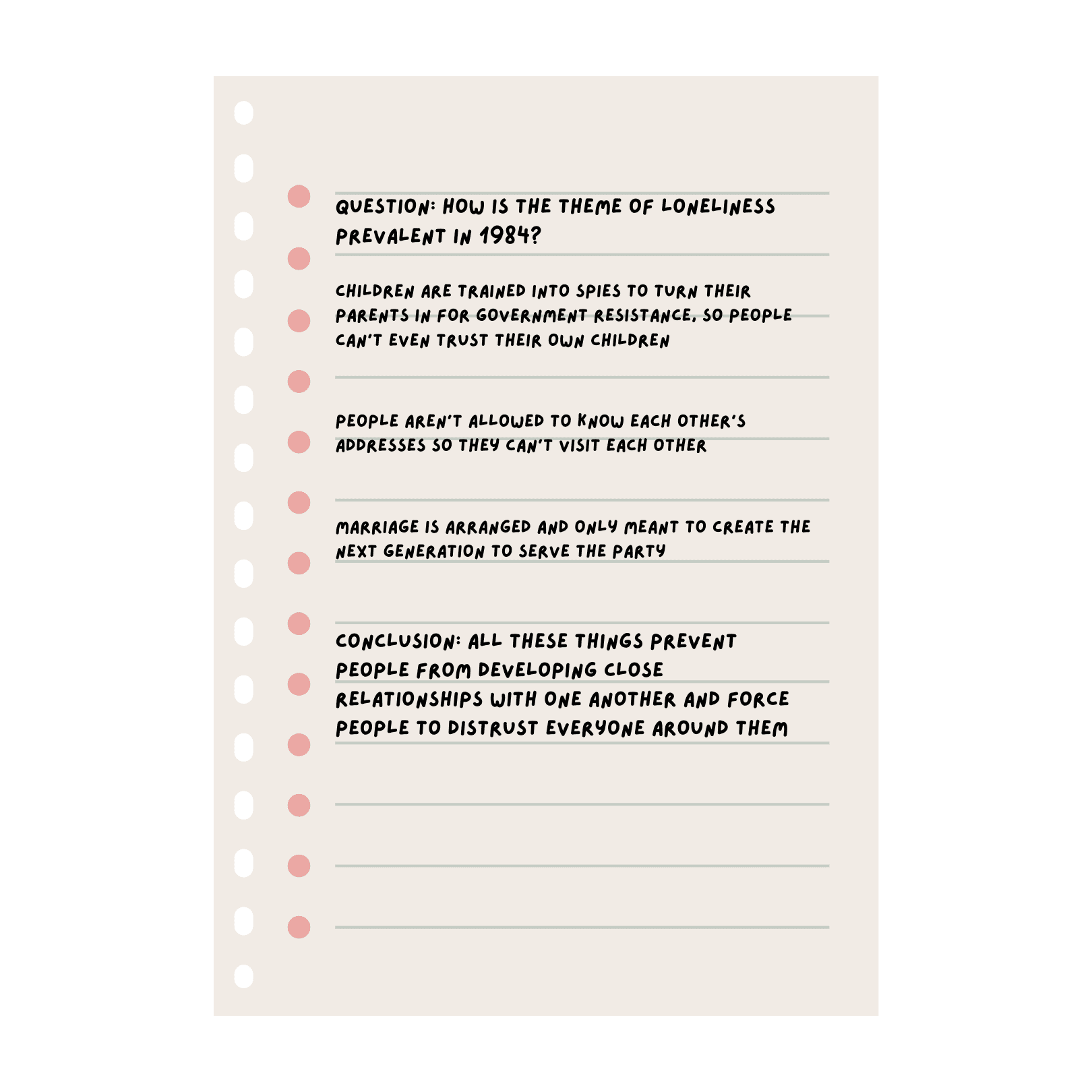
Pros:
- Requires critical thinking
- Helps you identify overarching themes, instead of getting bogged down by details
- Good practice for essays (each Q/E/C section is like the outline for a paragraph)
Cons:
- Difficult if you aren’t familiar with the concepts yet (you would need to review the content before being able to draw connections and conclusions)
- Not applicable to technical classes
REAP Method of Note-Taking
How to:
REAP stands for read, encode, annotate, and ponder. Here’s how to do each step:
Read: First, read the textbook chapter (or whatever it is you need to read for the class). To make the most of this step, scan the chapter before reading it.
As I mentioned at the beginning of this article, getting confused is often the result of a gap between expectation and what actually happens. By scanning the chapter for headings; subheadings; italicized, bolded, underlined, and otherwise emphasized terms and concepts; and visual graphics, you prime yourself to expect what will be covered.
Encode: As you’re reading, write down notes. Jot a few sentences or bullet points down in your own words after every section or subsection.
To make the most out of this, challenge yourself not to look at the textbook. Instead, try to recall information on your own. This will help your retention and understanding.
Annotate: As you’re reading, jot things down in the textbook. If you notice connections to other things you’ve learned or come up with real-world examples, write them down.
Ponder: After finishing the reading, spend time to recall and reflect on what you read. Describe what you learned out loud, or jot down a few bullet points or sentences.
When to use:
This is a good method to use when you need to do extensive reading for a class.
I used this strategy frequently for history classes. These courses were very content-dense and required lots of memorization. Plus, I needed to be able to think critically about historical events and their relationships to one another, instead of getting bogged down by details.
The REAP method helped me actively recall things I’d just read (otherwise, I’d forget about them right after) and make connections between various events.
Example:

Source: Fast Track to a 5: Preparing for the AP United States History Examination, To Accompany The American Pageant 15th and 16th Editions
Pros:
- Good for content-dense courses, where a lot of reading and memorization is involved
- Requires critical thinking
- Helps you retain information you’ve just read
Cons:
- Time-consuming
- Not suitable for technical courses, where doing practice problems is a better way to retain and understand information
You may also like “How to Apply Atomic Habits to Studying to Get Good Grades”
Writing on Slides (or Handouts) Method of Note-Taking
How to:
If your professor provides handouts or slides that you have access to, you can write on them directly.
Either print them out or export them to a digital note-taking app. When I use this method of note-taking, I export resources to Notability, where I can easily mark them up during a lecture.
When to use:
If you’re taking a class with a lot of diagrams (like anatomy or biology), writing directly on slides or handouts can save you a lot of time.
Example:

Pros:
- Easy to do during live lectures
- Saves time
Cons:
- Notes aren’t in your own words
- Not applicable to classes without handouts or slides
- Little critical thinking involved
Box-and-Bullet Method of Note-Taking
How to:
In the box-and-bullet method of note-taking, you put main ideas in boxes, then put supporting details in a bulleted list below.
When to use:
This method is applicable when you know what topics will be covered before a lecture. You can write down and box the main ideas beforehand, then add bullet points during the lecture.
Example:

Pros:
- Can easily view the main ideas
- Simple hierarchy
- Easy to do during live lectures
Cons:
- Not applicable in a live lecture if you don’t know what the main ideas will be
- Can be a hassle to draw the boxes (although you don’t have to—you can just label the main ideas with “Main Idea # _”)
- No division into subtopics
- Little critical thinking involved
QA Split-Page Method of Note-Taking
How to:
In the QA split-page method of note-taking, you put questions on the left side of the page and answers on the right.
To use this during live lectures, take your notes on the right side of the page. After class, write corresponding questions on the left.
When to use:
Active recall is essential for effective studying. It involves pulling information from your brain, instead of relying on external sources.
For example, rereading your notes or a textbook is not active recall because your notes and the textbook are external sources. However, studying with flashcards is active recall because you have to come up with answers on your own.
The QA split-page method of note-taking makes active recall studying super easy. When you review your notes, ask yourself the questions listed on the left, and try to come up with an answer before looking at the right column.
I recommend using this method for classes that require a lot of memorization.
Example:

Pros:
- Great for testing yourself (active recall!)
- Good for live lectures (although you do need to fill in the left column after class—nevertheless, this is a good review)
Cons:
- No hierarchy of topics
- Doesn’t identify relationships between concepts
- Mostly for retention (little critical thinking involved)
Toggle Method of Note-Taking
How to:
This final method is what I use to take notes in Notion. I label toggles with questions, then put the corresponding answer under the toggle.
When reviewing, I ask myself the question and try to respond on my own before opening the toggle.
When to use:
This method applies to note-taking in Notion.
Example:

Pros:
- Flexible and easy to organize
- Great for testing yourself (active recall!)
- Can insert images and embed videos
- Can link to helpful online resources
Cons:
- Takes time (and knowledge of LaTeX) to type formulas
- Toggles take time to format (although you can format them after class and just type up a bulleted list during the lecture)
Learn more about how you can combine the boxing note taking method with the toggle method here.
Additional Tips for Effective Note-Taking
Tip #1: Use Symbols and Abbreviations
Needless to say, using symbols and abbreviations can save a lot of time. Check out this list of 150+ symbols and abbreviations for note-taking.
Tip #2: Review Lecture Notes Within 24 Hours
German psychologist Hermann Ebbinghaus discovered what’s referred to as the Forgetting Curve. According to the Forgetting Curve, we forget on average 90% of new concepts we learn after being exposed to them once.
If you don’t review your notes after taking them, you’re bound to forget them. Therefore, it’s important to review lecture notes within 24 hours of taking them.
After that, you should continue to periodically review your notes using a method called spaced repetition (learn more about spaced rep in this post on effective study strategies). I’ve automated my spaced repetition study schedule using Notion, which has helped my retention and understanding significantly.
Tip #3: Use a Mix of Note-Taking Methods
Don’t stick to one note-taking method. Different methods are applicable in different situations and have different pros and cons. Therefore, it’s important to evaluate which note-taking method is best in each situation.
For instance, methods like the outline, T-chart, Cornell, sentence, and flow methods are good for live lectures. On the other hand, methods like the mapping, charting, Q/E/C, and REAP methods aren’t suitable for live lectures but can nevertheless be helpful for retention and understanding.
I would recommend experimenting with different methods and choosing a few that you switch between.
FAQ
What is the most common note-taking method?
The most common note-taking method is probably the outline method because it’s applicable in most classes and makes it easy to see the hierarchy of topics.
What is an efficient way to take notes?
If you need to take notes quickly during a lecture, the following note-taking methods are all suitable:
- Outline method (make sure to check the syllabus beforehand to make a list of headings and subheadings)
- T-chart method
- Cornell method (make sure to fill in the summary section after class)
- Sentence method
- Flow method
- Writing on slides/handouts method
- Box-and-bullet (make sure to check the syllabus beforehand to make a list of the main ideas)
- QA split-page (make sure to fill in the question column after class)
- Toggle method (may need to format toggles after class)
Decide which method to use based on your personal preference and the content of the lecture.
What is the scientifically best note-taking method?
There is no single best note-taking method since different methods work well in different situations. However, scientifically speaking, the learning process is facilitated by active recall and critical thinking. Therefore, note-taking methods that emphasize these strategies can help you learn more effectively.
Methods like the T-chart, Cornell, box-and-bullet, QA split-page, and toggle methods make it easy to study using active recall. In the Cornell note-taking method, for example, you can study by recalling information about the keywords in the left column before looking at the right column.
Methods like the mapping, charting, Cornell, Q/E/C, and REAP methods facilitate critical thinking by compelling you to think about how details are related to one another. In the Q/E/C note-taking method, for example, you need to understand how details contribute to overarching main ideas.
Overview of 14 Methods of Note-Taking
There are a variety of note-taking methods, all of which are applicable in different situations and have different pros and cons. Some are good for live lectures, while others are better for reviewing or reading from a textbook.
There is no single “best note-taking method”, so it’s important to experiment with a variety and choose a few that you switch between. Personally, I enjoy using the flow method in live lectures for technical classes, the REAP method when learning from a textbook, the writing on slides method when lots of diagrams are involved, and the toggle method to type notes quickly during live lectures (I format the toggles after class).
I discovered that this combination worked for me after testing a variety of methods, and you should do the same.
For more on note-taking, check out these posts:
For more on studying and student success, check out these posts:
- 7-Day Dopamine Detox for Studying—Skyrocket Your Focus Now!
- Best Aesthetic Note Taking App (Free & Easy-to-Use)
- How to Apply Atomic Habits to Studying to Get Better Grades
- How to Wake Up at 5am to Study—Tips From a Former Night Owl
- How to Take APUSH Notes—Improve Speed, Memory, and Grades
- 7 Secret Tips For Studying That Will Transform How You Study
- 11 Ways to Stop Getting Distracted by YouTube While Studying
- Best All-in-One Aesthetic Planner App for Students
Which methods of note-taking do you currently use? What methods do you want to try out? Let me know in the comments below!

Learning With Angie is a place to share honest, unfiltered advice to promote student success. So if you’re a student (high school, college, or beyond) looking for tips on productivity, studying, personal growth, and more to reach your potential, this is the place! To read more about Learning with Angie, click here.

